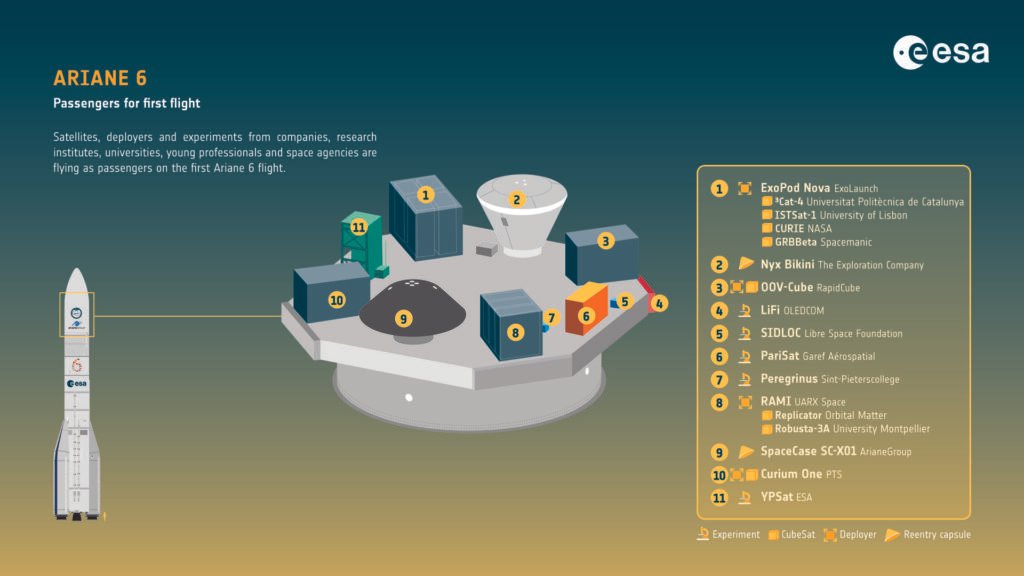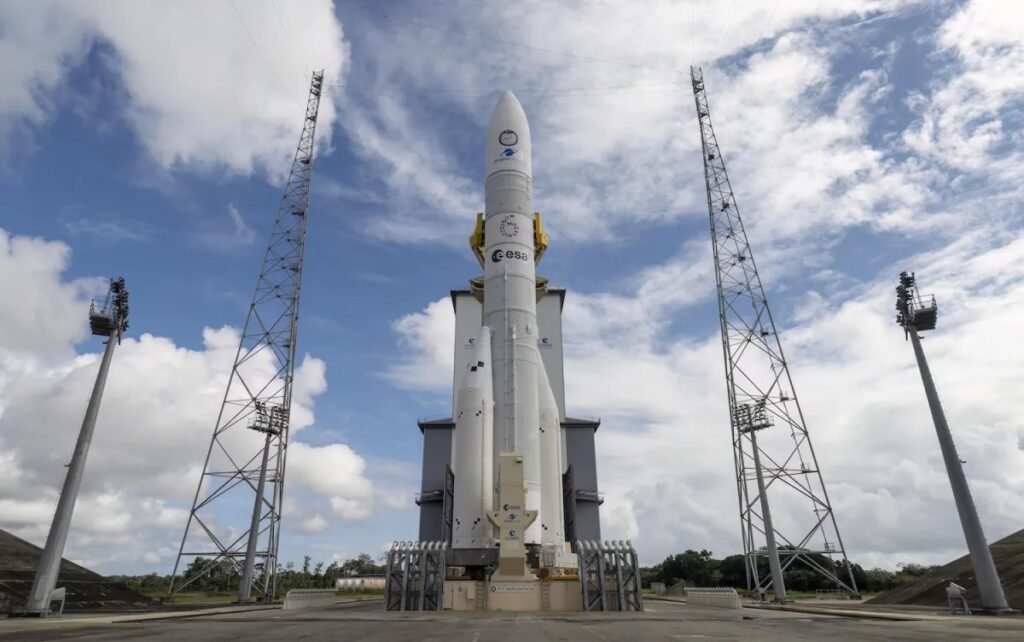On 9th July of this year, was launched for the first time, the European Space Agency’s Ariane 6, the successor of Ariane 5.
Source: Space.com
The Ariane 6 launched for the first time ever today (July 9), lifting off from Europe’s Spaceport in Kourou, French Guiana, at 3:01 p.m. EDT (1901 GMT).
Development of the Ariane 6 began in late 2014, and its debut was originally envisioned to take place in 2020. But the timeline slipped due to technical issues and outside problems.
The delays meant that the Ariane 6 did not overlap with the Ariane 5, which flew 117 orbital missions from 1996 to 2023. The Ariane 5’s retirement left Vega, a small-satellite launcher, as the only operational orbital rocket in Europe’s stable.
That wasn’t an acceptable situation for European space officials, who don’t want to be dependent on SpaceX’s workhorse Falcon 9 and other foreign rockets to loft their big payloads. So they’d been eagerly awaiting today’s launch.
The two-stage Ariane 6 is built by the French company ArianeGroup and operated by its subsidiary Arianespace on behalf of ESA. The rocket’s first stage is powered by a single Vulcain 2.1 engine — an evolved variant of the Ariane 5’s Vulcain 2 — and its upper stage features one Vinci engine, which is new technology. (The Ariane 5’s upper stage sported one Aestus engine, or one HM-7B.)
The Ariane 6 comes in two variants: the A62, which has two strap-on solid rocket boosters (SRBs), and the A64, which has four SRBs. The A62 and A64 can deliver about 11.4 tons (10.3 metric tons) and 23.8 tons (21.6 metric tons) to low Earth orbit (LEO), respectively.

A64’s payload capacity is comparable to the Ariane 5’s. But the Ariane 6 will do the job for about half the price of its predecessor, thanks to manufacturing improvements and other advances, European officials have said.
Those prices are murky, however; Arianespace has been cagey about its per-flight costs, so all we have are estimates. Late last year, Ars Technica pegged the baseline price of an Ariane 5 launch at about 150 million euros ($162 million US at current exchange rates), which would put the target price of an Ariane 6 mission at 75 million euros ($81 million US).
As Ars noted, that would make the new rocket “reasonably competitive” with the market’s dominant launcher, the Falcon 9, which can be booked for $67 million per flight. But there’s more to the story: ESA’s member states have committed to subsidize the Ariane 6, to the tune of 290 million to 340 million euros ($314 million to $368 million US) per year through 2031 or so. So the actual per-launch cost will likely be considerably higher than what Ariane 6 customers are paying.
The Falcon 9, as most folks know, is partially reusable: Its first stage comes back to Earth for recovery, refurbishment and reflight. But the Ariane 6, like the Ariane 5 before it, is expendable. This design decision makes sense, given that the new rocket will likely fly a maximum of 10 times or so per year for the foreseeable future, ESA officials have said.
Ariane 6 first launch
According to the source, the first launch transported 9 nanosatellites and some experiments to 600 km (370 miles) above Earth. NASA’s CURIE is to discover the origin of solar radio waves, other nanosatellites are to study Earth’s climate and measure gamma rays.




